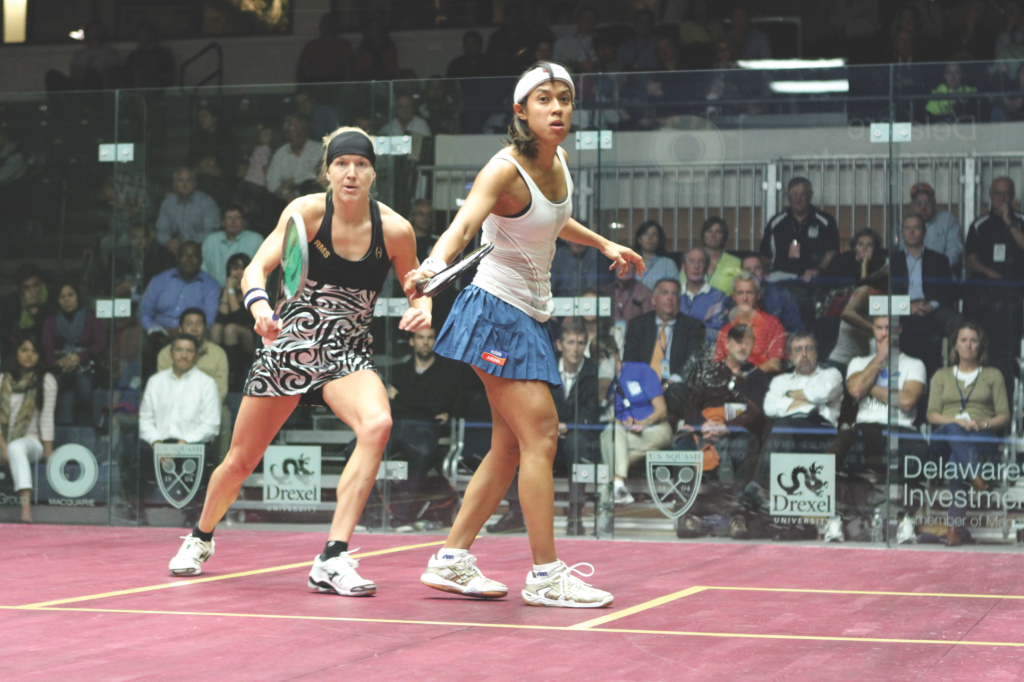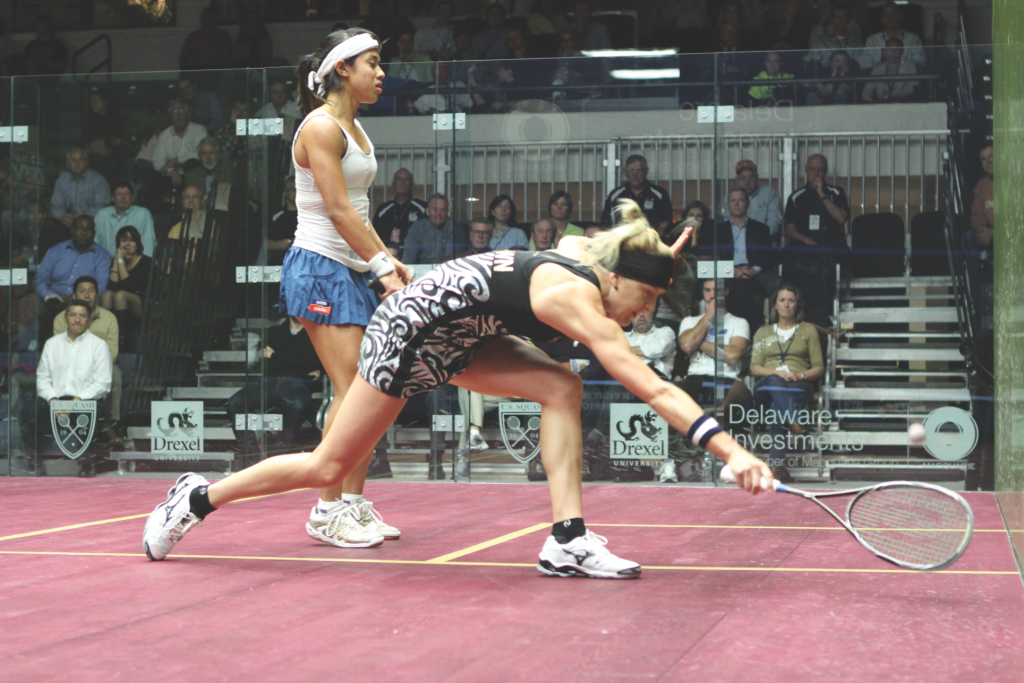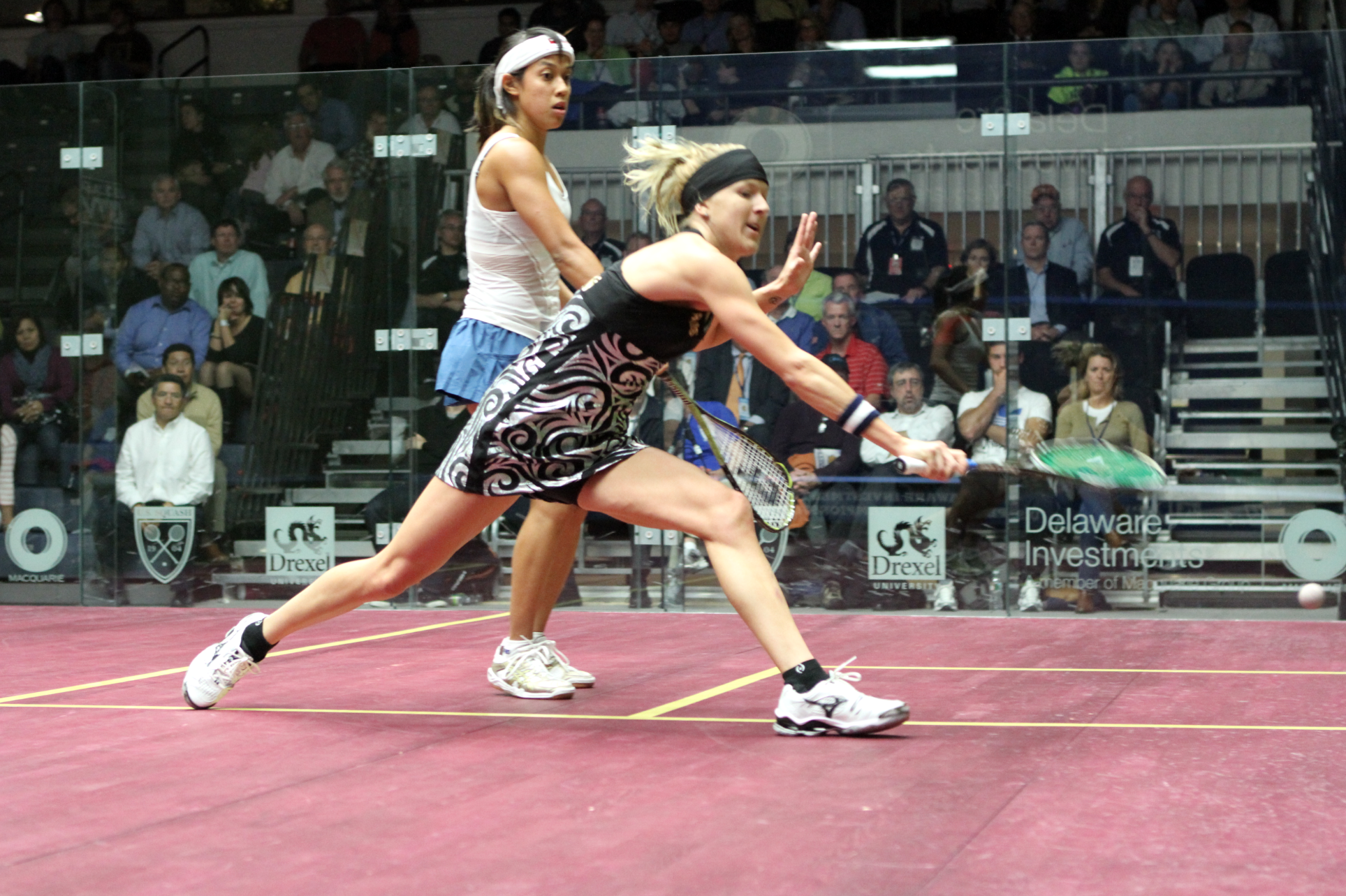By Barry Faguy, WSF Referees and Rules Committee
I suppose we could quip that the reason so few ‘No Lets’ are given is because so few players actually ask for one! It is, of course, the decision no player wants to receive. Some ballpark estimates tell us that the ‘No Let’ decision accounts for about 10% of all decisions—thus making it the least granted form of appeal by far. The idea of bringing up this subject is to help enhance your awareness of the decision making process which, in turn, allows you to become a better official when you’re at bat.

The list of ‘No Lets’
Just for fun—see if you can come up with the seven rules-based reasons for which a ‘No Let’ might be assessed in so far as interference situations are concerned. Go ahead—take a few moments, but don’t peek at the list below. I’ll wait…
OK, let’s compare lists. According to the rules, a ‘No Let’ is assessed if:
1. There was no interference (12.7.1)
2. There was minimal interference (12.7.1)
3. The player played through the interference (12.7.3)
4. The player created the interference (12.7.4)
5. The player did not make every effort (12.7.2)
6. The player would not have made a good return (12.7.2)
7. The player appealing is not the striker (12.5.2)
 Number 6 is probably the first reason that came to mind for you—but it’s clear now that there are quite a few others.
Number 6 is probably the first reason that came to mind for you—but it’s clear now that there are quite a few others.
Observations about the ‘No Let’
So, here, in no particular order, are some observations regarding the ‘No Let’:
A Tough Warning: Let’s first make some things clear. The game cannot have any semblance of continuity if the striker is not willing to put up with some interference. Even though the opponent is responsible for any legitimate interference (since there’s no one else on the court!), the striker should accept whatever interference will not significantly compromise his/her ability to make the desired return. Given the nature of the game, the confined space, the pace of the players and speed of the ball, it is unreasonable to expect continually unfettered freedoms. The simple existence of any interference should not be an excuse to avoid going after a difficult ball, or to allow for a break when faced with fatigue.
 So, with that in mind, the ‘No Let’ becomes a very useful tool for you. It is in fact, the strictest of all warnings regarding either the amount of effort that you expect, or the amount and effect of interference that you consider qualifies for a let. You should look for opportunities early in the match to make such a statement with this decision— using a standard that is reasonable that you can and will be willing to apply throughout. Easier said than done, but the message is valid, and a consistent standard should be primordial. Of course, there is always the option of using the ‘Yes Let but…’ decision (as in “Yes Let, but that was borderline effort and the next time you should play that ball”) as a lesser warning—but the ‘No Let’ makes a more powerful statement.
So, with that in mind, the ‘No Let’ becomes a very useful tool for you. It is in fact, the strictest of all warnings regarding either the amount of effort that you expect, or the amount and effect of interference that you consider qualifies for a let. You should look for opportunities early in the match to make such a statement with this decision— using a standard that is reasonable that you can and will be willing to apply throughout. Easier said than done, but the message is valid, and a consistent standard should be primordial. Of course, there is always the option of using the ‘Yes Let but…’ decision (as in “Yes Let, but that was borderline effort and the next time you should play that ball”) as a lesser warning—but the ‘No Let’ makes a more powerful statement.
Creeping Laxity: Closely related to the preceding, you need to beware of the slippery slope that might be called ‘creeping laxity’—a phenomenon where you allow a let too easily early in the match, followed by yet another. You are then stuck with that standard, and the lets might become seemingly endless. You dig a hole for yourself with a consistently lowered standard where almost any hint of interference gets a let—and the players know it. At its worst, it can devolve to an embarrassing exhibition and, inevitably, at a crucial part of a game, you’ll be called on to repeat it—having lost all control. The early, yet justified ‘No Let’ is your best preventive medicine.
 “Yes Let” Fatigue: Be careful of a phenomenon that I have often seen (and fallen victim to)—something that could be referred to as ‘Yes Let fatigue’. It’s a condition that arises when, as a Referee, you have given a large number of ‘Yes Let’ decisions and you’re starting to get fed up with that state of affairs—even though they may be perfectly justified. Seeking a change, you grasp at the first opportunity to say ‘No Let’—often quite unfairly. The pressure to do so comes from either boredom, complaints from the opponent or the audience, an attempt to balance out a previous questionable decision, or from fear that one will be perceived as being a weak Referee. None of those is a valid reason.
“Yes Let” Fatigue: Be careful of a phenomenon that I have often seen (and fallen victim to)—something that could be referred to as ‘Yes Let fatigue’. It’s a condition that arises when, as a Referee, you have given a large number of ‘Yes Let’ decisions and you’re starting to get fed up with that state of affairs—even though they may be perfectly justified. Seeking a change, you grasp at the first opportunity to say ‘No Let’—often quite unfairly. The pressure to do so comes from either boredom, complaints from the opponent or the audience, an attempt to balance out a previous questionable decision, or from fear that one will be perceived as being a weak Referee. None of those is a valid reason.
Thwarting Instincts: There are clearly other places where the ‘No Let’ is the wrong decision as well, yet your natural instinct might be telling you to assess one. I’m referring to cases as outlined in Guideline No. 11, known as ‘wrong footing’ and ‘position of advantage’ scenarios—where the striker’s initial wrong direction, or previous poor return, have led to an interference situation. The tendency is to want to punish the player responsible for having caused (not to be confused with ‘created’) those situations. When faced with either of those two common scenarios, a fair ‘No Let’ decision must be based on one of the seven reasons listed above—not simply on the fact that the player went the wrong way or placed the opponent in an advantageous position. To justify a ‘No Let’ using those occurrences alone is indeed instinctive but, unfortunately, based on misconceptions that are contrary to the rules, and thus unfair.
Conclusion
As usual, it’s always a delicate balancing act for you to find the right actions at the right time and for the right amount of transgression. I hope the preceding has added to the repertoire of the considerations that will help you find that balance.


